Pollutants

Until the Exxon Valdez disaster, few knew what bioremediation was. However, by then, researchers had been studying living beings with cleanliness for years. Bioremediation is based on the recovery of contaminated soil and/or water by the use of degradable living beings.
Nature has the capacity to regenerate itself, for example, if in a forest a large logging is practiced, in the soil there is abundant organic matter. So the saprophytic organisms that inhabit decaying organic matter multiply and degrade fallen material. His work makes the forest regain balance.
Human beings have learned to use for their own benefit what happens in nature, for example, for some time black wells have been used to purify wastewater. Formerly they did not know the scientific basis of the processes that were produced there, despite the tangible results. It was later discovered that the anaerobic bacteria found at the bottom of the black wells, which do not need oxygen to live, decompose the sunken organic matter, while the one left on the surface is degraded by aerobic bacteria that need oxygen. Currently, these same processes are used in urban and industrial wastewater treatment plants.
From black well to black tide
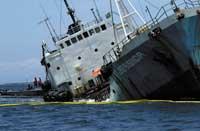
For many years, the pollutants generated in industrial, mining, agricultural activities... have been emitted simply to the environment, surpassing the capacity of renewal of nature. There are currently specific environmental protection laws and standards that require special waste treatment. But accidents can always occur. For example, in November of last year the oil tanker Prestige sank in the Galician waters, which became a bomb against the environment.
This also happened in the case of oil tanker Exxon Valdez. To combat the black tide created then, among other things, microorganisms were used. Some marine microorganisms saw their ability to degrade hydrocarbons: For example, bacteria of the genera Pseudomonas, Corynebacterium and Mycobacterium, some yeasts and green algae. In addition, nitrogen, phosphorus and potassium, important nutrients for microorganisms, were provided to increase their effectiveness.
On the other hand, wind and waves also contribute to eliminate the black tide. Due to wind and waves an emulsion is formed, that is, the fuel molecules are dispersed into small particles. This facilitates the arrival of marine oil microorganisms inside the oil layer.
Like at sea, on earth
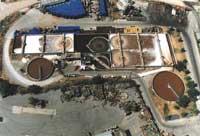
If the pouring occurs in the soil, the process is different. Degradation remains in the hands of fungi and bacteria, but is more difficult than in water. This is because, on the one hand, the fuel is filtered to the lower layers and, on the other, is trapped in the processes of humus formation. Another difference with the spills that occur in the water is that in the soil, the factor limiting the proliferation of fungi and bacteria is not the shortage of nutrients, but the lack of oxygen. For microorganisms to have enough oxygen to reproduce, the soil will be ventilated or peroxides added (H 2 O 2).
In addition to fuels, microorganisms degrade many other organic pollutants such as polycyclic aromatic hydrocarbons (PAH), polychlorinated biphenyls (PCBs), explosives, pesticides, etc.
Some of these organic pollutants are molecules also present in living beings, so it can be relatively easy to find a microorganism that degrades them. However, when it comes to new molecules, strange to life, it is much more difficult to find a microorganism capable of breaking it down.
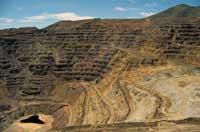
In the words of Juan Luis Ramos, director of the experimental station of the Consejo Superior de Investigaciones Científicas de España (CSIC), ZADIN, “there has not been enough time to produce enzymes that eliminate these foreign substances, so they accumulate”. And it is even more difficult to find suitable microorganisms for cleaning soils contaminated with heavy metals (cadmium, lead, beryllium, mercury...).
Cleaning plants
Some plants, for their part, do not give up these toxic heavy metals for the rest of organisms. Therefore, they are suitable for use in the phytoremediation used by plants. In this area, the Faculty of Sciences of the UPV/EHU of Leioa and NEIKER work together.
The Department of Plant Biology and Ecology, José María Becerril, explained that it is trying to get plants capable of eliminating heavy metals. In fact, mining has had great force in some parts of the Basque Country and many soils have been contaminated with heavy metals. Over time there is a risk that these metals will pass to living beings and, due to their toxicity, they can cause serious health problems.
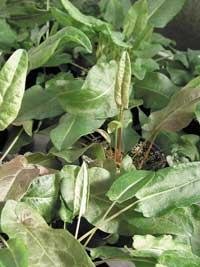
The extraction of metals is carried out by physical-chemical methods, but they have a very negative effect on the soil, due to the need of its transfer to the treatment place, with a total alteration of the soil. On the contrary, plants with absorption capacity and accumulation of heavy metals are planted in situ. This allows to recover a desert landscape.
These special plants accumulate between 10 and 1,000 times more metals than conventional ones, so the accumulated amount of metals can represent between 1 and 5% of the weight of the dry plant. The burning of the plant allows the collection of metals and take advantage of the energy released during incineration.
Mining plants
Unfortunately, these metal-accumulating plants are usually small and rare, so although large concentrations of metals are extracted, small quantities are finally obtained. In order to overcome this problem, the Faculty of Sciences and NEIKER have approached two ways: on the one hand, the study of the plants with greater storage capacity of heavy metals and, on the other, the transformation of the plants used in the fields into a good extractor of metals.
Although crop field species are not very good at absorbing heavy metals, they have much higher biomass than plant accumulators, much more organic matter. Therefore, they aim to increase the tolerance and absorption capacity of certain metals in some plants in the fields, in order to create plants capable of extracting large amounts of metals. At the moment, the best results have been obtained with thistle.
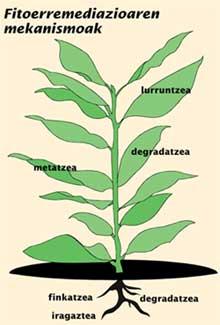
As for metal-accumulating plants, they have focused on plants growing in landfills. At first, mine plants were collected, from which those that could store metals were selected. Subsequently, other factors were taken into account: the biomass they had, their ease of use or not, their appeal to herbivores... If the plant were attractive, herbivores would help expand the contaminant.
Following these criteria, two or three plants of the 60 that were initially collected have been selected. One of them is Rumex acetosa, which is now investigating how to increase extraction efficiency. On the one hand, they want to know the ideal conditions to increase the biomass of the plant (pH, temperature, humidity, etc. ). On the other hand, we are looking for ways to make more accessible the metals for the plant. The addition of binders in the soil favors the formation of compound ligant-metals that are more easily absorbed by plants. However, the fact that metals are more affordable carries the risk that other living beings can do it more easily.
Collaborating better
Apart from the extraction and accumulation of metals, other plant mechanisms are also useful in phytoremediation. For example, plants can expel volatile contaminants along with breathing. Plants help fix contaminants around the roots. In fact, plants are solar powered water pumps, for example, poplars are able to absorb 115 liters of water a day and grow rapidly. Therefore, poplars are used in various areas to prevent the passage of contaminants to lower layers.

In addition to all this, 20% of the organic matter produced by plants flow through the roots. This organic matter is an excellent source of energy for bacteria and fungi. Consequently, microorganisms are concentrated around the roots. Considering this, plants can be used for the incorporation and dispersion of degrading microorganisms.
The combination of plant absorption strength and the degradation capacity of microorganisms significantly increases the effectiveness of remediation. Plants do not degrade pollutants, as much they transform them so they are not toxic. However, for those who eat the plant it can remain toxic or, after the death of the plant, return to the soil the pollutant. Hence their interest in the combination of microorganisms and plants, among which total degradation and elimination of the pollutant can be achieved. And if the roots of these plants have different lengths, better, as they will work at different depths.
Chiaroscuro
Bioremediation has obvious benefits: it is cheaper than physical-chemical methods, does not generate a lot of waste, accelerates processes that occur in nature, applies on the ground, uses solar energy, society sees it with good eyes (except in the case of organisms created with biotechnology)...

However, not everything is favorable. First, indigenous ecology changes due to the introduction of living beings that no longer existed. In addition, sometimes the risk of contaminants entering the food chain increases; harmful substances that were previously found in the soil pass both to microorganisms and plants, facilitating the passage to animals that feed on them. At the end of the chain would be man.
In addition to its effects on the environment, bioremediation techniques have many limitations to overcome them. In general, they are ineffective: they can only be used with certain contaminants, they must be present on the surface of the soil or water and, above all, they need a lot of time, months or years.
However, at the moment there is no complete solution for cleaning contaminated soils, so it is considered advisable to consider bioremediation.
Activities and installations potentially polluting the soil
(Source: IHOBE). |
Biotechnology and ‘suicide’ bacteria
Biotechnology seeks to improve nature. Knowing which enzymes degrade contaminants, researchers try to identify the genes that control their production. Subsequently, these genes can be inserted into the genetic code of the organism that suits. In this way, the properties of some microorganisms in nature can be grouped into a single bacterium or form the genes of bacteria in a plant.
For example, in the ZADIN center of the CSIC a bacterium was manufactured capable of mineralizing the explosive TNT (2,4,6 trinitrotoluene) that the living cannot degrade. TNT is the most widely used explosive in the world and is very polluting. Some bacteria of the genus Pseudomonas saw that TNT is capable of degrading to toluene, while enzymes that degrade toluene are encoded in the plasmid WWO. They put the plasmid into the genome of the bacteria and obtained the bacteria that removes TNT. Then they took another step: Introducing the genes associated with the degradation of TNT in the tobacco plant, a transgenic tobacco has been developed that completely decomposes the explosive.
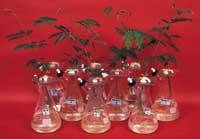
Similar trials are being carried out in many research centers, but for the moment in Europe field studies are not authorized, as they do not know the influence of foreign genes of genetically modified organisms on nature. Now we are looking for ways to control genetically modified organisms and, among other things, ‘suicidal’ bacteria have been created that are eliminated after pollutant degradation.
The ‘suicidal’ bacteria are killed at the end of the pollutant they degrade. This is achieved by introducing the gene that encodes a special protein in the genome of recombinant bacteria. This protein perforates the cell wall of the bacteria, so it dies.
While there is contaminant, the ‘killer’ gene is inhibited, which is the contaminant itself. However, when bacteria degrade the entire contaminant, the gene is expressed and protein is produced, which pierces the cell wall and the bacteria dies. This mechanism aims to prevent the passage of foreign genes to nature.
Buletina
Bidali zure helbide elektronikoa eta jaso asteroko buletina zure sarrera-ontzian











